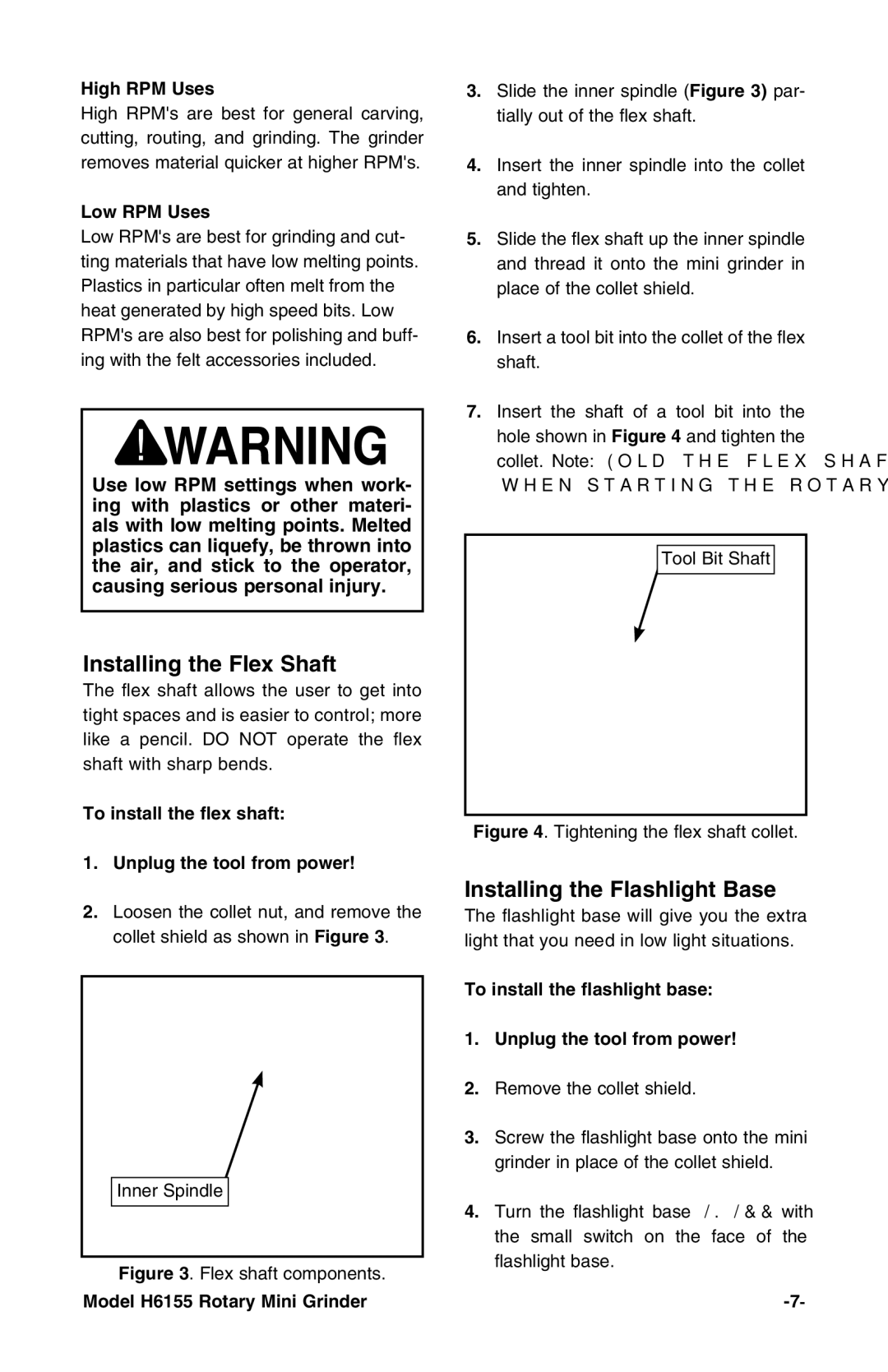
High RPM Uses
High RPM's are best for general carving, cutting, routing, and grinding. The grinder removes material quicker at higher RPM's.
Low RPM Uses
Low RPM's are best for grinding and cut- ting materials that have low melting points. Plastics in particular often melt from the heat generated by high speed bits. Low RPM's are also best for polishing and buff- ing with the felt accessories included.
Use low RPM settings when work- ing with plastics or other materi- als with low melting points. Melted plastics can liquefy, be thrown into the air, and stick to the operator, causing serious personal injury.
Installing the Flex Shaft
The flex shaft allows the user to get into tight spaces and is easier to control; more like a pencil. DO NOT operate the flex shaft with sharp bends.
To install the flex shaft:
1.Unplug the tool from power!
2.Loosen the collet nut, and remove the collet shield as shown in Figure 3.
Inner Spindle
Figure 3. Flex shaft components.
Model H6155 Rotary Mini Grinder
3.Slide the inner spindle (Figure 3) par- tially out of the flex shaft.
4.Insert the inner spindle into the collet and tighten.
5.Slide the flex shaft up the inner spindle and thread it onto the mini grinder in place of the collet shield.
6.Insert a tool bit into the collet of the flex shaft.
7.Insert the shaft of a tool bit into the hole shown in Figure 4 and tighten the collet. Note: Hold the flex shaft firmly when starting the rotary mini grinder.
Tool Bit Shaft
Figure 4. Tightening the flex shaft collet.
Installing the Flashlight Base
The flashlight base will give you the extra light that you need in low light situations.
To install the flashlight base:
1.Unplug the tool from power!
2.Remove the collet shield.
3.Screw the flashlight base onto the mini grinder in place of the collet shield.
4.Turn the flashlight base ON/OFF with the small switch on the face of the flashlight base.
